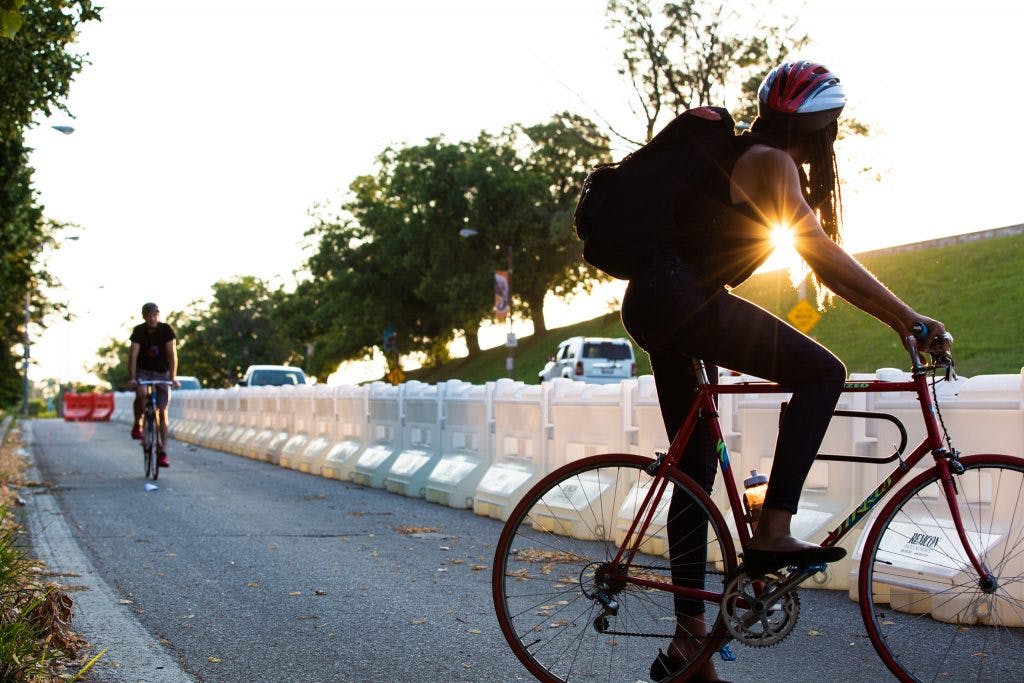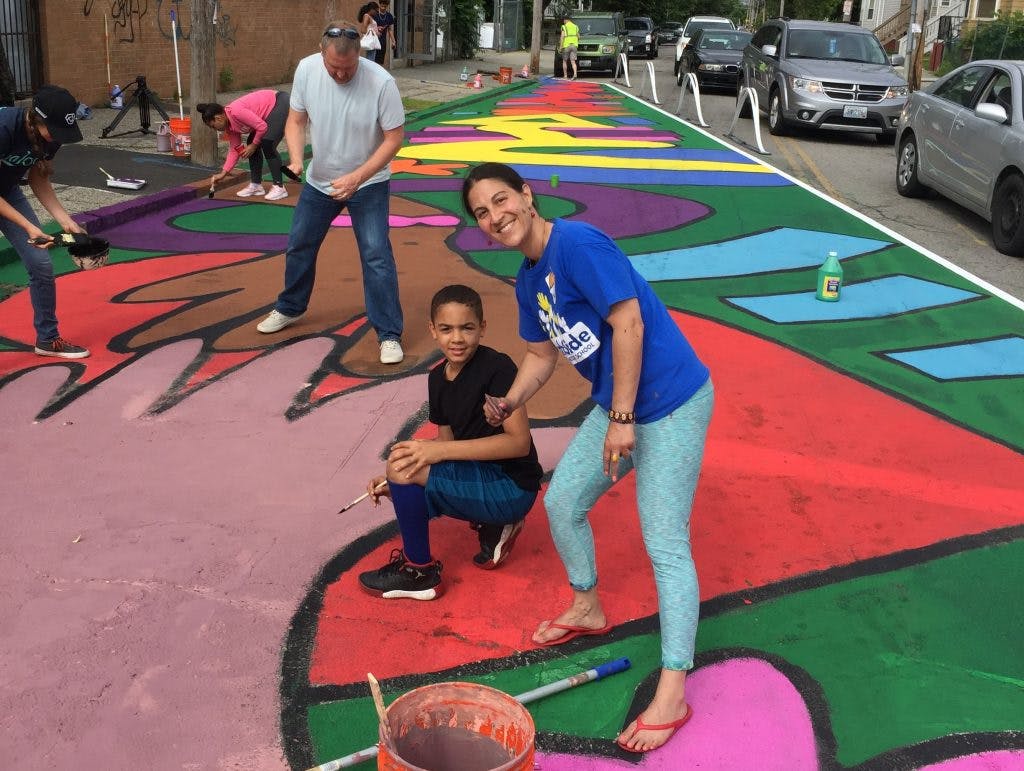Explore Our Network of Sites
Search
By:

PFB’s Big Jump Project continues to provide resources for cities pushing boundaries to accelerate the rate of change. This year, our collaboration with local governments and non-profit organizations yielded big results in a handful of cities.
Baltimore’s Big Jump area is a perfect example of how an extremely dangerous set of streets can be calmed with one major change. Baltimore’s The Big Jump is a new path accessible by foot, bike, and mobility devices along Druid Park Lake Drive and 28th Street. It connects the community to jobs and several recreational options. It also allows people who use wheelchairs to cross Interstate 83 safely and easily for the first time in at least 50 years. For many people in the community, this path has already been life-changing. For as long as many could remember, the trip from Reservoir Hill to Remington was virtually impossible, especially for those with mobility limitations. The path has generated tons of support and optimism about the possibilities for infrastructure in Baltimore. As a result, the BNA score for this area jumped 5 points because of strategic investment to alter a high-speed highway into a comfortable, protected pathway.
Baltimore Complete Streets is a Coalition of organizations that helped pass Council Bill 17-0102 this November. The bill will set in motion a 13-month process of creating new manuals and guidelines for how streets are built and how space is shared. They also repealed a fire code that was preventing the construction of bikeways and overall infrastructure progress. These changes to legislation are fully aimed at completing Baltimore’s bike network.
Fort Collins was at the top in our City Ratings for 2017, and this year they’ve proven that they’re only interested in continuing to improve. They’ve expanded their bikeshare program, are investing in e-bikes, and have seriously upped their programing in an effort to reach everyone in the community. In addition to completing the local bike network, Fort Collins is also working to connect to other communities nearby.
The West Mulberry Street Redesign and Protected Bike Lane Project was completed in September, and serves as a direct east-west corridor to the heart of the Big Jump area. This corridor connects residents to schools, parks and to the downtown area. The redesign converted a 1.5-mile, 4-lane arterial to a street with two travel lanes and a center turn lane, and protected bike lanes on both sides. The project includes several different types of bikeway protection and treatments, including bike rails, concrete curbs, flex posts and parking protection.
Fort Collins is invested in putting infrastructure on the ground while facilitating safety through inclusive programming for all ages and abilities. Looking to 2019, they’ll be introducing e-bikes to their Big Jump community, and hope to open all kinds of business and network opportunities.

The city of Providence used the arts as a way to get people excited about and on board with infrastructure in one of the most dangerous areas of town. Their City Walk Demonstration relied on painted streets as a temporary means to enliven the public space. And people took notice: it worked. They changed the geometry of the street. They slowed traffic down. But most importantly, they brought the community together. In addition to the demonstration on the ground, they conducted a series of surveys and called for neighborhood response. They took measurements of use and travel speeds, and made a plan for a permanent project.
Providence also saw huge success in the introduction of JUMP bikeshare. People who hadn’t been on bikes in decades changed their whole routine and outlook on their city because of the bikes.
Memphis also followed the demonstration into permanent infrastructure plan. Similar to Providence, they used various forms of tape, paint, and signage to alert the community about the temporary project.
Memphis concluded their teen ambassador program, which gave bikes to 20 teens in the Big Jump area, in addition to locks, lights, and helmets. The teens learned about bike safety and about their neighborhood. They then led community rides, where they were given the opportunity to share what they had learned. Memphis transitioned to a new chapter of the ambassador program with Explore Bikeshare. The new version was focused on adults in the community, with a goal of continuing to spread awareness of bikeshare and encouraging mobility and equity.

In collaboration with Bike Easy’s campaign for Complete Streets, New Orleans put their Connect the Crescent demonstration on the ground. This was a 3-month “pop-up” protected roadway network, to encourage discussion about mobility and safety issues. They also organized a series of outreach efforts to promote safe, accessible biking for all residents as a means of promoting health and economic equity, and greater mobility for all people.
We’d like to take the opportunity to thank the many people and organizations that have supported the Big Jump projects, and acknowledge that making change in cities requires a broad base of support. We look forward to even more community progress as we look to the new year.